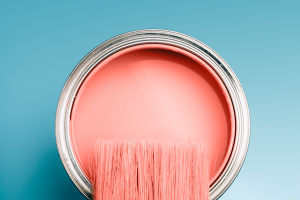Tulips are a flower that exudes nobility and elegance, capturing people's attention with their unique beauty and range of colors.
This plant has high ornamental value, with petals of varying colors and branches and leaves that are incredibly elegant. Many families choose to plant tulips at home to bring vibrancy and beauty to their environment.
Tulip flowers are bell-shaped or bowl-shaped with single or multi-layered petals, coming in a variety of colors including red, yellow, pink, purple, and white. The height of the flowers generally varies from 10 to 70 cm, and the leaves are lanceolate.
Tulips are perennial herbaceous plants belonging to the Liliaceae family and can be grown in every corner of the world. Keukenhof Tulip Park is the largest tulip park globally, with over 100 species and more than 4.5 million tulips.
The ideal growing environment for tulips is essential for their growth and development. Tulips are extremely cold-resistant and can withstand temperatures as low as -35°C during the winter dormancy period.
However, tulips can also be cultivated in open fields in areas with a minimum temperature of 9°C in winter. A low temperature below 9°C for more than 16 weeks will break the dormancy of the bulbs and allow them to grow and develop normally.
Tulips are day-neutral plants and do not have strict requirements on the length of sunshine. They prefer light and are slightly tolerant of partial shade, but if the light intensity is too low, weakened photosynthesis will lead to poor growth.
Tulips are neither drought nor wet-tolerant, and soil that is too wet has poor ventilation and is prone to gray mold. Tulips prefer sandy loam rich in humus, and fertile, and well-drained soil. They do not grow well on heavy clay soils, and the pH value of the soil is preferably 6.0-7.0.
Tulips hold symbolic meaning in various cultures. They are a world-renowned bulb flower and an excellent cut flower variety. The tulip flowers are strong and straight, and the leaves are elegant and beautiful, making them very attractive.
Tulips are regarded as a symbol of victory and beauty in Europe and America. The Netherlands, Iran, and many other countries regard tulips as national flowers.
The Netherlands has a long history of tulip planting and is known as the "Tulip Country." In the Netherlands in the 17th century, tulips were once a rare and precious item, even more, expensive than gold.
Now, there are many varieties of tulips in the Netherlands, and the tulip flower show held every spring attracts tourists from all over the world. The tulip planting technology in the Netherlands is advanced, with many people planting them in flower beds, gardens, and potted plants, decorating the streets and alleys of the city, making the whole city full of the breath of spring.
Apart from their beauty and cultural symbolism, tulips have several other uses. In terms of medicine, tulip can be used to treat some liver and spleen diseases and cough and other symptoms.
Tulip bulbs can also be used to make spices and food, such as cakes and desserts. However, it should be noted that tulip bulbs contain certain toxins and should not be eaten in excess.
In conclusion, tulips are exquisite and elegant flower that captures people's attention with their unique beauty and range of colors. These plants require specific growing environments and have cultural and symbolic significance in various cultures. They also have several other uses, making them an incredibly versatile and valuable plant.


